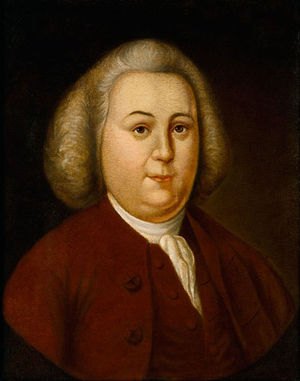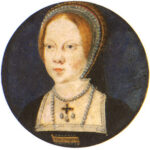Peyton Randolph was born to a prominent family in who served the King of England from the colony of Virginia. Due to his fathers role for the king, he was educated at home by private tutors that his father hired. He graduated with honors and held a degree as a Master of Arts in Law. He came to the United States to enjoy the freedom of the 13 independent colonies. He pushed for independence and supported democracy.
In 1739, Randolph studied at the College of William and Mary in Williamsburg, Virginia. He studied law in London at the Inner temple. He was admitted to the bar of Virginia on February 10, 1745 and became an attorney.
In 1745, he married Elizabeth Harrison. They did not have any children.
Randolph’s Political Career
In 1748, Randolph was appointed the Kings attorney for the colony of Virginia which was his fathers position before that. In 1766, his political beliefs separated from the kings beliefs and he could no longer carry on his position.
In 1748, he was elected to to represent Williamsburg in the Virgina House of Burgesess. He served for one year and resigned. During his year in office, he openly objected to taxes that were proposed on land purchase and deeds.
In 1752, Randolph began representing the College of William and Mary, which he did until 1758.
In 1754, Randolph traveled to London to plead his case against taxes. he was only partially successful in his effort to have the taxes waved. This caused Randolph to have a political conflict with Virginia governor Robert Dinwiddle. This conflict allowed people to see that he really did want the colonies to be an independent set up and that he was for the people.
In 1758, Randolph resigned from representing the College of William and Mary to take back his seat at the Virginia House of Burgesses, where he served until his death in 1775.
The French and Indian War
As many people feared the large number of French that had invaded the territory, and the large number of Indians that had become a French Ally, Randolph created a small company of men and fought against the Native Americans. This created a stronger reputation for him than he had before along the colonies.
Randolph’s Actions as A Colonial Leader
In 1765, when the British Parliament passed the Stamp act, Randolph objected. The purpose of the Stamp Act was to pay for the dept that was created by the French and Indian War. The Stamp Act was a tax on all documents and paper products.
After the Stamp Act passed regardless of the efforts of the colonists, Randolph realized that his views, and the views of Parliament and the King, were very different. He then resigned from the position he had as attorney for King George III.
This act alone showed the colonist that they could trust Randolph. He was elected as the Speaker for the House of Burgesses in November of 1766. He held this position until his death in 1775.
In 1773 the citizens showed their opposition of the Townshend Act by use of the Boston Tea Party. The British government responded by passing the Coercive acts in 1774. The Coercive Acts closed the port of Boston and many Bostonians were disappointed to have British people move into their homes. This was very disturbing to the Virgina House of Burgesses. Prayer and fasting by the members of the House of Burgesses in hopes that the Christian beliefs would bring through a miracle. However, Randolph had another plan. He reconvened the former Virgina Delegates, more than 100 delegates showed up to the first convention. The met on August 1, 1774 to come up with a plan of action. They drafted the “Preservation of the Common Rights and Liberty of British America.”
During this opposition, Randolph met with many prominent leaders. Among the most noted were George Washington and Patrick Henry.
President of the Continental Congress
In August of 1774, Randolph was elected the chairman of the Virginia Delegation to the First Continental Congress. On August 10, 1774 he called a meeting of the citizens of Williamsburg to allow them to give their input on Brittan’s taxes and get their input on the proposed plan to counteract them.
On September 5, 1774, he attended the meeting of the First Continental Congress, where he was elected their first president. In a way, his presidency was similar to being a judge over the congressional meetings. He heard arguments from those who wanted to just accept the taxation and beg Parliament to return to pre-Stamp Tax times, and others who felt war was the answer.
Throughout the six days that arguments were held, Randolph did not utter a word. He listened to the arguments of all of the representatives. In the end, it was determined that the colonies would continue to support Boston and the colony of Massachusetts. A pledge was made that no more imports of British goods would be allowed after November 1, 1774. If this did not get their point across, a pledge was made to stop export of American goods to Great Brittan as of August of 1775.
After the First Continental Congress disband, Randolph returned home to Virginia. On March 21, 1775, he called a meeting of the citizens of Richmond to hear their views on the efforts that were made of the first Continental Congress.
On April 20, 1775, Lord Dunmore, had all of the gunpowder removed from the armory in Williamsport. It was placed on a ship that was bound for England. Lord Dunmore did not pay for the gunpowder and a riot in sued. Randolph managed to calm the mob and was able to get payment from Lord Dunmore.
In the Summer of 1775, Randolph was again serving at the Virginia House of Burgesses as a speaker. He asked for people to resist the urge to fight the British. In the fall, Randolph attended the meeting of the Second Continental congress. He was chosen again as it’s president.
At the meeting of the Second Continental Congress that Randolph died from lack of neurological function that was caused by a stroke. His body was transported to Virginia, where he was buried underneath the Chapel attached to the College of William and Mary.
Electronic References:
http://www.encyclopedia.com/topic/Peyton_Randolph.aspx
http://www.history.org/Almanack/places/hb/hbran.cfm
http://www.nndb.com/people/101/000049951/
http://www.ushistory.org/declaration/related/randolph.htm
http://www.answers.com/topic/peyton-randolph
http://www.history.org/almanack/people/bios/biorapey.cfm
“The First Virginia Convention, ” Let America Speak-Our Voice as Our Vote,http://www.history.org/other/teaching/voteasvoice/convention.html, (March 17, 1998).
Read more: http://www.answers.com/topic/peyton-randolph#ixzz1qicCNDvF
Hard Copy References:
Treese, Joel D., Biographical Directory of the American Congress, 1774-1996, Congressional Quarterly Staff Directories, Inc., 1997.
Edmund Pendleton, A Biography by Mays, D.J. Copyright ©1952. Published by Harvard University Press, Cambridge, Massachusetts.
The American Revolution: A Narrative, Critical and Bibliographical History by Chamberlain, M. Copyright ©1972. Published by Land’s End Press
Reardon, John J., Peyton Randolph, 1721-1775: One Who Presided, Carolina Academic Press, 1982.


